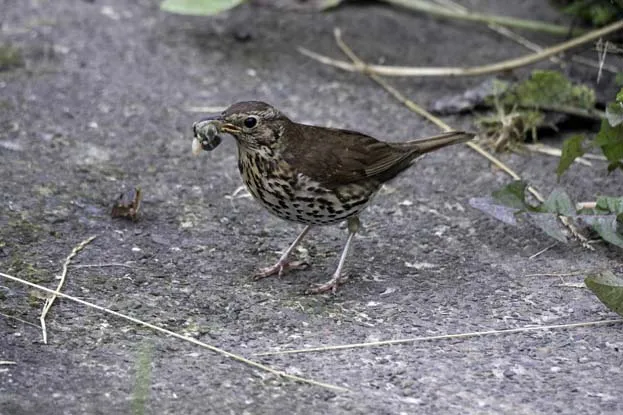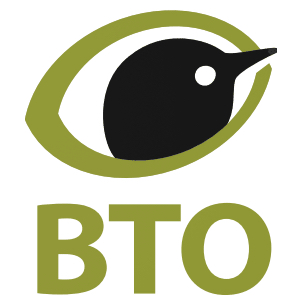The song thrush used to be a very common bird in the UK. In fact, in the early 20th century it was more abundant than the blackbird. However, since the 1940s, blackbirds have flourished, making them a more familiar bird these days.
Between 1970 and 2010, the UK song thrush population declined by 54 per cent. It is thought that one of the causes could be the increased mortality of young song thrushes, especially in the first few months after they fledge.
This may be due to the reduced availability of snails and earthworms, particularly in gardens and farmland where pesticides are used. Other causes suggested for the overall decline include changes to farming practices, land drainage and woodland management.
Sedentary birds?
In most of the country, song thrushes remain in the same area unless there is a severe winter and they need to move to find food. However some birds from Scotland and northern England are partially migratory, spending the winter in Ireland or on mainland Europe. Also, those birds that do stay in England will be joined by continental birds.
Paler, grey thrushes from Scandinavia pass through in the spring and autumn, and some birds from Belgium and the Netherlands overwinter here, in the south of Britain.
Different races
Our song thrushes are quite different to those found across the rest of Europe. Those birds found over most of Britain and Ireland belong to a distinct race, known as clarkei, as opposed to those found on mainland Europe which are philomelos.
However, on the Outer Hebrides and Isle of Skye, there’s a third race, hebridensis. As you move northwest across the range, the birds become progressively darker with stronger markings.
Countryside sound
There are many reasons that people love song thrushes, but its song has made it a well-known part of the countryside. While the song is less rich than that of a blackbird, its bold, bell-like clarity has a penetrating quality. It consists of a series of phrases with many repeated three times in succession, making it a recognisable song.
A song thrush’s repertoire can consist of 100 of more distinct phrases, including some apparent mimicry of other birds and various sounds such as car alarms. Some elements of the song also seem consistent between generations suggesting that they are potentially passed down from adults to young.
The song thrush is one of the birds taken by colonists to Australia and New Zealand, perhaps for its familiar song. While it didn’t establish very well in Australia, it is now one of the most common garden birds found in New Zealand.

Song thrushes will usually eat snails in late summer when other food becomes hard to find. © John Harding/BTO
Smashing bird
The classic image involving song thrushes, for many of us, is that of it smashing open a snail on a stone. While snails are an important food source, they don’t really become targets until late summer when other food becomes hard to find.
This is especially true in hot, dry spells or cold winters with frozen ground when earthworms, their other favourite food, become hard to find. In early summer, they supplement their diet with caterpillars, and in the autumn they will readily also eat fruit.
How to spot a song thrush
It is very easy to confuse a song thrush and a mistle thrush. Song thrushes are smaller and generally have warmer brown tones on their upperparts, whereas the mistle thrush is paler.
The key, however, is in the spots. Song thrush spots on their underparts look more like inverted ‘arrowheads’ which are sparsely spread on the breast and flanks.
Mistle thrush spots are more rounded and merge to form dark patches at the fold of the wing.
The British Trust of Ornithology (BTO) works in partnership with over 40,000 volunteer birdwatchers to chart the fortunes of UK birds.
Main image: © John Harding/BTO
